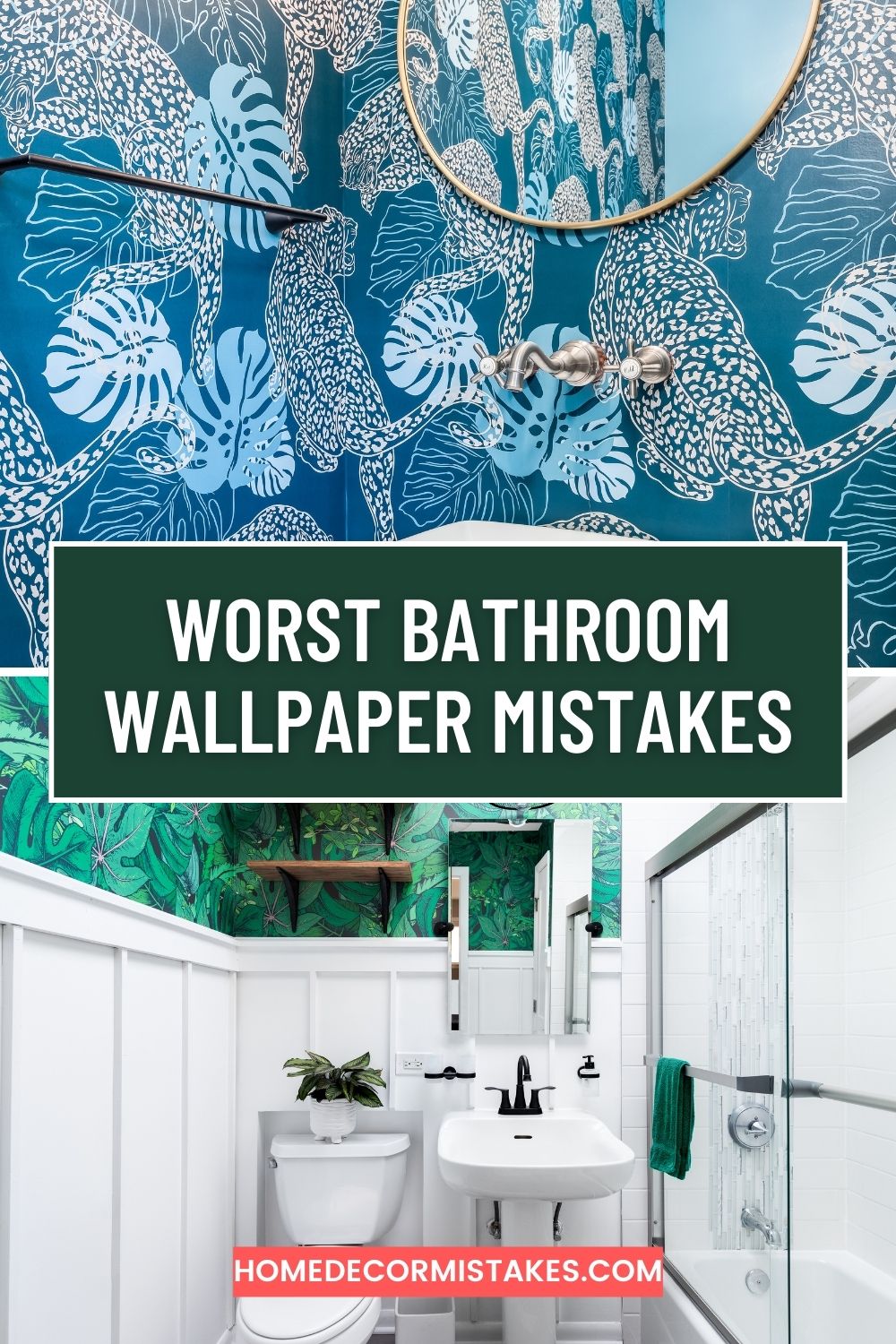Bathroom Wallpaper Mistakes: 6 Tips to Avoid a Design Disaster
Are you thinking about adding wallpaper to your bathroom? With the right choice, wallpaper can transform a dull space into a stylish retreat. However, choosing and installing wallpaper in a bathroom comes with unique challenges. This guide will help you avoid common pitfalls and ensure your wallpaper project is a success. Here are six essential tips to avoid a design disaster in your bathroom.
1. Choose Moisture-Resistant Wallpaper
Bathrooms are high-humidity environments, making traditional wallpaper a poor choice. Instead, opt for moisture-resistant or vinyl wallpaper designed specifically for bathrooms. These types of wallpaper are better suited to withstand the damp conditions, preventing peeling, mold, and mildew. If you’re unsure, consult with a specialist at your local wallpaper store or seek recommendations online.
Why It Matters:
- Durability: Moisture-resistant wallpapers are designed to last longer in humid environments.
- Health: Prevents the growth of mold and mildew, which can cause health issues.
2. Properly Prepare the Walls
Before applying wallpaper, ensure your walls are in good condition. Remove any existing wallpaper, clean the surface, and fill in any cracks or holes. It’s also crucial to apply a primer, especially if you’re working with a previously painted surface. This step ensures the adhesive bonds well and the wallpaper lays flat without bubbles or wrinkles.
Steps to Prepare:
- Clean: Wipe down the walls to remove dust and grease.
- Repair: Fill holes and sand down rough spots.
- Prime: Apply a primer suitable for wallpaper to improve adhesion.
3. Measure Carefully
Accurate measurements are vital to avoid wastage and ensure a seamless look. Measure the height and width of your bathroom walls and account for windows, doors, and fixtures. Always purchase a little extra wallpaper to cover mistakes or future repairs. Most manufacturers provide guidelines on how much excess to buy, typically around 10-15%.
Tips for Measuring:
- Double-Check: Measure twice to ensure accuracy.
- Account for Patterns: If your wallpaper has a pattern, calculate the extra needed to match the design.
4. Consider the Layout and Design
The layout and design of your wallpaper can dramatically affect the overall look of your bathroom. Avoid overly busy patterns in small spaces, as they can make the room feel cluttered. For larger bathrooms, bold designs can create a focal point and add character. Pay attention to scale and proportion to ensure the wallpaper complements the room’s size and style.
Design Considerations:
- Scale: Large patterns can overwhelm small spaces.
- Color: Lighter colors can make a small bathroom appear larger.
- Pattern: Horizontal stripes can elongate, while vertical stripes can add height.
5. Use Proper Adhesive
Using the right adhesive is crucial for the longevity of your wallpaper. Bathroom wallpaper often requires a stronger adhesive to withstand moisture and steam. Read the manufacturer’s instructions carefully and use the recommended adhesive. Applying the adhesive correctly will prevent the wallpaper from peeling and ensure it remains secure.
Adhesive Tips:
- Follow Instructions: Use the adhesive recommended by the wallpaper manufacturer.
- Even Application: Apply adhesive evenly to avoid lumps and ensure a smooth finish.
6. Hire a Professional
If you’re not confident in your DIY skills, consider hiring a professional. Experienced wallpaper installers have the tools and expertise to handle tricky areas around fixtures and ensure a flawless finish. While it may cost more upfront, a professional installation can save you time and prevent costly mistakes.
Benefits of Hiring a Pro:
- Expertise: Professionals know how to handle challenging installations.
- Quality: Ensures a high-quality finish with no bubbles or misalignments.
- Saves Time: Speeds up the process and reduces the risk of errors.
Conclusion
Wallpapering your bathroom can be a rewarding project that elevates the space’s aesthetic and personalizes your home. By choosing moisture-resistant wallpaper, preparing the walls, measuring accurately, considering layout and design, using the correct adhesive, and potentially hiring a professional, you can avoid common mistakes and achieve a stunning result. With these six tips, you’ll be well on your way to creating a beautiful and functional bathroom that you can enjoy for years to come.

